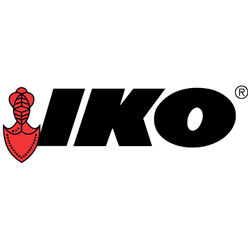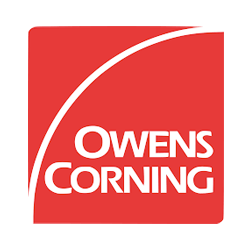Insulation is rated in terms of thermal resistance, called R-value, which indicates the resistance to heat flow. The higher the R-value, the greater the insulating effectiveness. The R-value of thermal insulation depends on the type of material, its thickness, and its density. In calculating the R-value of a multi-layered installation, the R-values of the individual layers are added.
The effectiveness of an insulated ceiling, wall or floor depends on how and where the insulation is installed.
Insulation which is compressed will not give you its full rated R-value. This can happen if you add denser insulation on top of lighter insulation in an attic. It also happens if you place batts rated for one thickness into a thinner cavity, such as placing R-19 insulation rated for 6 1/4 inches into a 5 1/2 inch wall cavity.
Insulation placed between joists, rafters, and studs does not retard heat flow through those joists or studs. This heat flow is called thermal bridging. So, the overall R-value of a wall or ceiling will be somewhat different from the R-value of the insulation itself. That is why it is important that attic insulation cover the tops of the joists and that is also why we often recommend the use of insulative sheathing on walls. The short-circuiting through metal framing is much greater than that through wood-framed walls; sometimes the insulated metal wall's overall R-value can be as low as half the insulation's R-value.
Some types of insulation require professional installation, and others you can install yourself. You should consider the several forms of insulation available, their R-values, and the thickness needed. The type of insulation you use will be determined by the nature of the spaces in the house that you plan to insulate. For example, since you cannot conveniently "pour" insulation into an overhead space, blankets, spray-foam, board products, or reflective systems are used between the joists of an unfinished basement ceiling. The most economical way to fill closed cavities in finished walls is with blown-in insulation applied with pneumatic equipment or with sprayed-in-place foam insulation.
The different forms of insulation can be used together. For example, you can add batt or roll insulation over loose-fill insulation, or vice-versa. Usually, material of higher density (weight per unit volume) should not be placed on top of lower density insulation that is easily compressed. Doing so will reduce the thickness of the material underneath and thereby lower its R-value. There is one exception to this general rule: When attic temperatures drop below 0°F, some low-density, fiberglass, loose-fill insulation installations may allow air to circulate between the top of your ceiling and the attic, decreasing the effectiveness of the insulation. You can eliminate this air circulation by covering the low-density, loose-fill insulation with a blanket insulation product or with a higher density loose-fill insulation.
Blankets, in the form of batts or rolls, are flexible products made from mineral fibers, including fiberglass or rock wool. They are available in widths suited to standard spacings of wall studs and attic or floor joists. They must be hand-cut and trimmed to fit wherever the joist spacing is non-standard (such as near windows, doors, or corners), or where there are obstructions in the walls (such as wires, electrical outlet boxes, or pipes). Batts can be installed by homeowners or professionals. They are available with or without vapor-retarder facings. Batts with a special flame-resistant facing are available in various widths for basement walls where the insulation will be left exposed.
Blown-in loose-fill insulation includes cellulose, fiberglass, or rock wool in the form of loose fibers or fiber pellets that are blown using pneumatic equipment, usually by professional installers. This form of insulation can be used in wall cavities. It is also appropriate for unfinished attic floors, for irregularly shaped areas, and for filling in around obstructions.
In the open wall cavities of a new house, cellulose and fiberglass fibers can also be sprayed after mixing the fibers with an adhesive or foam to make them resistant to settling.
Foam insulation can be applied by a professional using special equipment to meter, mix, and spray the foam into place. Polyisocyanurate and polyurethane foam insulation can be produced in two forms: open-cell and closed-cell. In general, open-celled foam allows water vapor to move through the material more easily than closed-cell foam. However, open-celled foams usually have a lower R-value for a given thickness compared to closed-cell foams. So, some of the closed-cell foams are able to provide a greater R-value where space is limited.
Rigid insulation is made from fibrous materials or plastic foams and is produced in board-like forms and molded pipe coverings. These provide full coverage with few heat loss paths and are often able to provide a greater R-value where space is limited. Such boards may be faced with a reflective foil that reduces heat flow when next to an air space. Rigid insulation is often used for foundations and as an insulative wall sheathing.
Reflective insulation systems are fabricated from aluminum foils with a variety of backings such as kraft paper, plastic film, polyethylene bubbles, or cardboard. The resistance to heat flow depends on the heat flow direction, and this type of insulation is most effective in reducing downward heat flow. Reflective systems are typically located between roof rafters, floor joists, or wall studs. If a single reflective surface is used alone and faces an open space, such as an attic, it is called a radiant barrier.
Radiant barriers are installed in buildings to reduce summer heat gain and winter heat loss. In new buildings, you can select foil-faced wood products for your roof sheathing (installed with the foil facing down into the attic) or other locations to provide the radiant barrier as an integral part of the structure. For existing buildings, the radiant barrier is typically fastened across the bottom of joists, as shown in this drawing. All radiant barriers must have a low emittance (0.1 or less) and high reflectance (0.9 or more).
Modern Cellulose insulation dates from the 1920's and came into general use during the post World War II building boom. Cellulose insulation was used extensively in electrically- heated homes during the 1950's, as it was the only insulation that made them affordable to heat. It is an established, time-proven building material.
Cellulose insulation has been mistakenly regarded as a fairly low-tech material. In fact, with the new, light density mills, chemical pulverizers, and electronic bagging systems that became available in the 1990's (all currently in use at National Fiber), the cellulose process technology is actually quite sophisticated.
Cellulose insulation has been proven in numerous industry sponsored (as well as government and third party sponsored) tests to be at least 40% more effective as both a thermal insulator and a sound barrier than fiberglass. In fact, at temperatures below freezing, the thermal effectiveness of fiberglass falls precipitously, while cellulose maintains its effectiveness.
Cellulose is less expensive to install than fiberglass. Cellulose provides significant, on-going savings vs. fiberglass on the cost of home energy. Cellulose insulation is environmentally friendly, as it is made almost entirely of re-cycled materials; the production process for fiberglass requires huge amounts of energy.
Cellulose has been around for 60+ years. With increased awareness about being environmentally responsible and reducing energy costs and the ease with which it can be installed in hard-to-reach areas, homeowners, architects, engineers and builders have discovered that cellulose is a superior approach to traditional glass or mineral fiber insulation.
There are several reasons:
Cellulose wood fiber is treated with non-toxic chemicals that absorb oxygen to choke the flame that requires oxygen to burn. Cellulose melts at a very high temperature and is actually considered a fire retardant.
Yes. Relative to competing products, Cellulose has superior properties for improving noise suppression in wall, floor and ceiling construction. The dense fibres and their natural ability to completely fill irregular and small cavities offer excellent sound adsorption properties. Wherever Cellulose is installed, it forms a very tight seal.
Yes! Cellulose insulation is tested by and listed under the CCMC 8532 (Canadian Construction Materials Centre) and certified by ISO 9001-2001. Is cellulose insulation more efficient than traditional fiberglass insulation?
Performance. Comfort. Safety. These are reasons enough to install Cellulose insulation. But there is another reason that is often overlooked -- when you choose Cellulose, you help protect the environment.
Cellulose insulation is made from 80% post-consumer recycled materials. Also, manufacturing our insulation uses one-fifth the energy required to make fiberglass24 and generates one-fifth the carbon dioxide25 (for a typical home, insulated to the same R-value).
Looking for a dependable, local team for your next project? Contact us for a free insulation or roofing estimate




